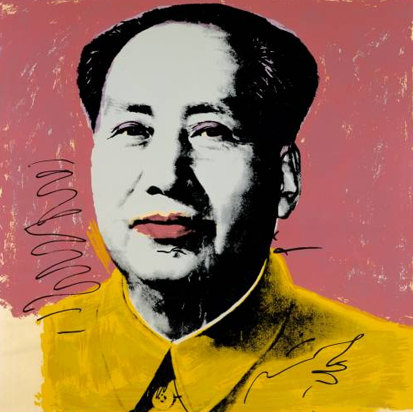The major retrospective of Andy Warhol's work at the South Bank.
ANDY WARHOL was as boring as he set out to be, but he was also one of the great artists of his cen-tury. Warhol's career was built on paradox. He became the greatest art-world star of his time, a celebrity whose fame rivalled that of the celebrities, the Marilyns and Elvises, whose images multiplied across his silkscreened canvases - yet his art was consecrated to cool impersonality. He set out to abolish the old no-tion of the artist as a privileged, inspired creator, the possessor of a special and precious sensibility - yet that, in these post mortem years of Andy's Apotheosis, is precisely how he is being sold.
'Andy Warhol: A Retrospective', at the Hayward, opens with a multitude of Maos, silkscreened in a variety of brash colours and hung on a modern recreation of the Chairman Mao wallpaper which Warhol devised for one of his exhibitions in the 1960s. Wallpaper, in fact, may be said to represent the ne plus ultra of Warhol's art. Painting is replaced by replication and reduplication. Art becomes mass-production, and vice- versa. Based in the New York studio he christened The Factory, Warhol became that paradoxical creature, the impersonal personality. He was the artist who established his identity by removing himself from his art. He didn't sign his pictures, and he didn't need to; he made anonymity his signature.
Most major exhibitions return the viewer, with a sense of freshness and discovery, to original works of art known too long and too exclusively through reproduction. Renewed acquaintance with Warhol's work is peculiarly and significantly dispiriting. Whether you are looking at row on row of Marilyns or Elvises, dollar bills or soup cans, the overwhelming impression is of an art that...


